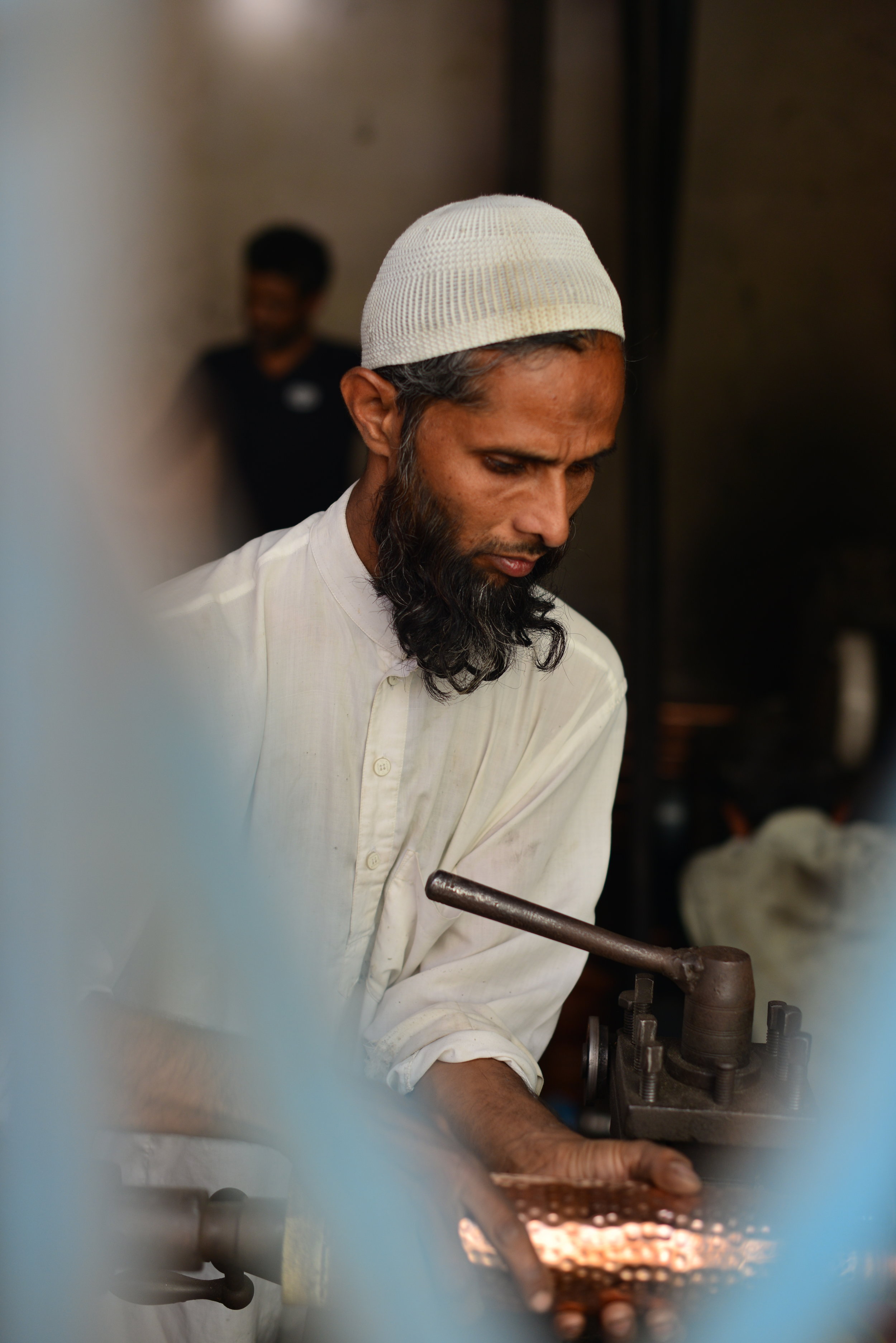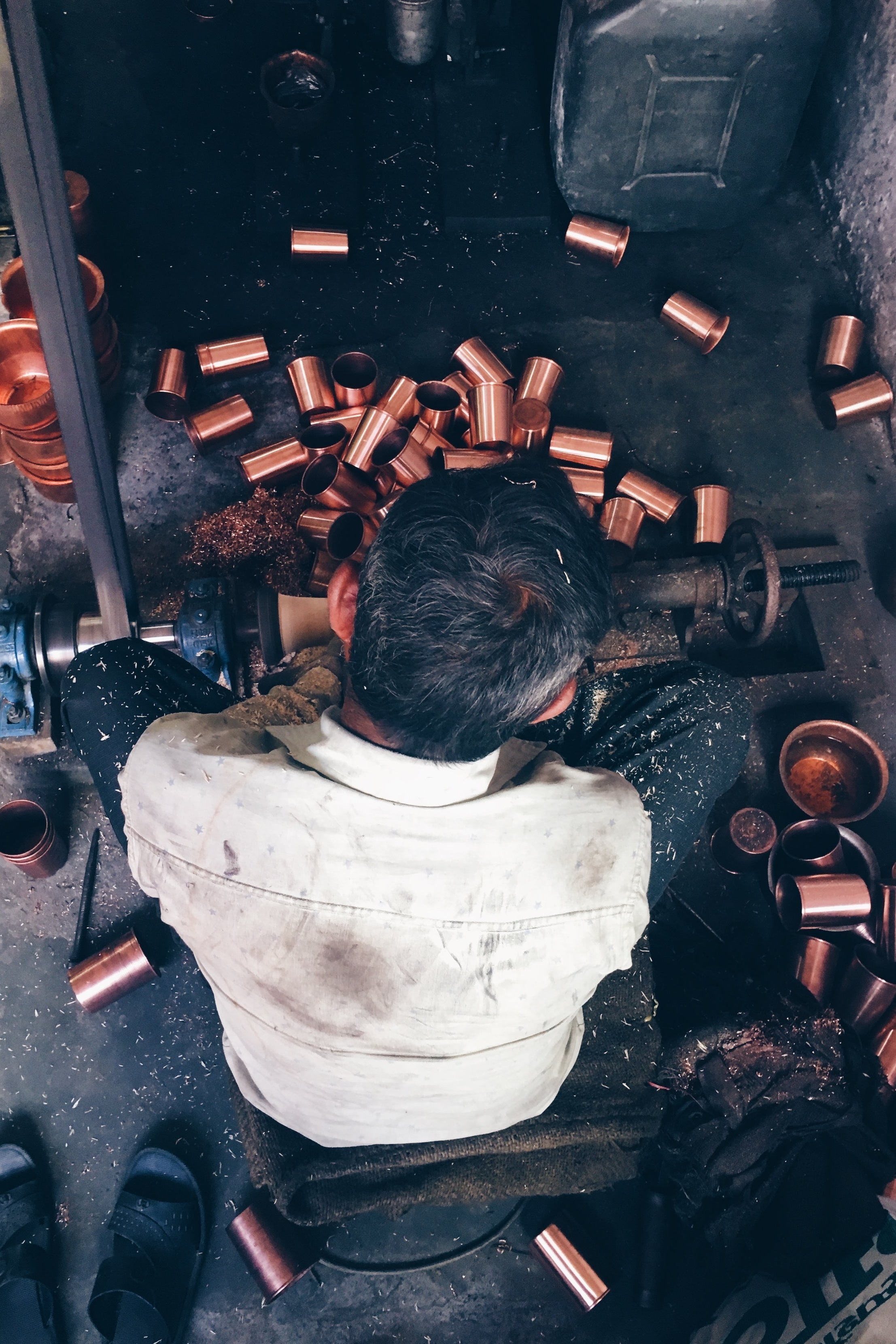India & Copper
Cultural significance
The rich tradition of copper goes back centuries within India: it playing a huge part in both religious and secular activities and traditions in the country. It holds a degree of prestige within families throughout society, often being passed through generations or making up part of marriage dowries in more traditional communities.
The present day popularity of the material is down to this traditional significance as well as a rising interest from those within society that seek a more conscious way of living. Copper is frequently prescribed in Ayurvedic medicine (which originated in India) for overall wellbeing.
Similarly to the material itself, the craft of copper has huge precedence within India, with many techniques also being passed down through generations.
Dwindling industry
However, in recent years the copper industry has seen a decline with the descendants of craftsmen opting for office based professions in India’s rising tech and business industries. This, coupled with a preference for cheaper mass produced utensils made from stainless steel and plastic, has lead to an overall redundancy in the copper craft.
UNESCO has recently added traditional copper craft of Northern India to its ‘Intangible Cultural Heritage of Humanity’ List in an attempt to safeguard this age-old practice.
Celebrating craftsmanship
TAMRA is also keen to celebrate copper for both its craft and material qualities. By sharing these products with a wider global audience we hope this will foster a greater appreciation and understanding of the rich copper tradition within India and support the artisans.
Our products are made in Moradabad in outer Delhi which is one of the few remaining copper 'clusters' within India. Moradabad has been a centre for metal craft for thousands of years, with many of the skills having been passed down through generations.



